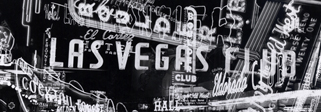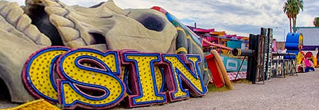Thursday, July 31, 1997 | 10:11 a.m.
Nine years after a rocket fuel booster plant exploded near Henderson, the Clark County Fire Department's chief investigator remembers frustration and delays in the probe as if it were yesterday.
Capt. Robert James said he'd like to take a look at what happened near Cedar City, Utah, after the same company that owned and operated Pacific Engineering & Production Co. of Nevada suffered another fiery blast Wednesday.
Now known as Western Electrochemical Co., PEPCON moved to Cedar City and changed its name about a year after the Southern Nevada explosion in 1988.
"We really don't have all the knowledge about this product," James said of ammonium perchlorate, an oxidizer used in fuel for space shuttles and nuclear missiles.
Piecing together events of the PEPCON disaster wasn't easy.
James said PEPCON obtained a restraining order at the former site on a Clark County-owned island near Henderson less than a week after the explosion in May 1988.
"We were hog-tied in a lot of ways," James said Wednesday after he learned of the Utah blast.
District Judge Donald Mosley slapped the temporary restraining order on the industrial site at the request of PEPCON executives, stopping the fire department or anyone else from removing or performing tests on key evidence.
Although the fire department opposed the order, it remained in place for more than a week until Mosley visited the site and then allowed the county fire department to continue its work, James said.
The initial restraining order differed from an access pact Mosley hammered out with investigators from state, employee and environmental agencies. Under that separate order, the judge allowed five groups of inspectors to visit the site, under the watchful eyes of the fire department.
James said the PEPCON fire and blast began when sparks from welding torches sent flames through a batch plant building. From there, flames fanned by winds between 20 and 30 mph spread to 3,000 pounds of ammonium perchlorate stacked against the building.
Although the precise cause of the blasts cannot be pinpointed, James said investigators believe the growing fire triggered a small explosion, followed by three more powerful shocks. Two of them registered 3.0 and 3.5 magnitude on the Richter scale used to measure earthquakes.
"That second explosion had 10 times greater force than the first," he said.
After the PEPCON disaster, the other producer of ammonium perchlorate, Kerr-McGee Chemical Corp., located less than a mile from the old Henderson site, voluntarily shut down operations until an independent inspection could be conducted.
"Kerr-McGee spaced its stored chemical," James said, noting a marked difference in the way the two companies handled the product.
Although at another time there was a small explosion at the Kerr-McGee site, which later moved its storage area to Apex, 15 miles northeast of Las Vegas, no damages or injuries off the site were reported.
"We need to start respecting those chemicals and ammonium perchlorate," James said.
The United States does not classify ammonium perchlorate as an explosive substance, probably because of its role in defense and space ventures, he said.
"There's enough concern on my part to take another look at its classification," James said.

 Explore Las Vegas’ past and present
Explore Las Vegas’ past and present Boomtown: The Story Behind Sin City
Boomtown: The Story Behind Sin City Neon Boneyard: A 360° look
Neon Boneyard: A 360° look Mob Ties: See the connections
Mob Ties: See the connections Implosions: Classic casinos crumble
Implosions: Classic casinos crumble